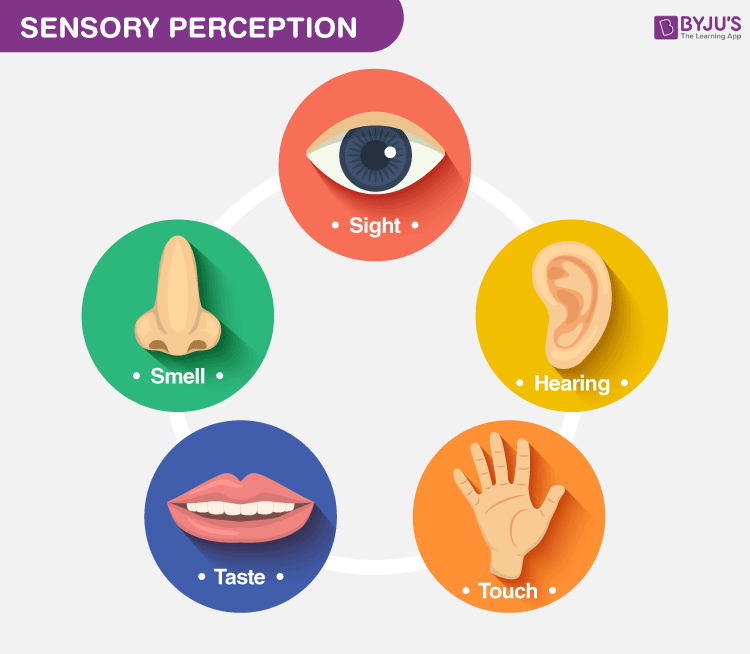What is Sensory Perception?
Perception simply implies the use of the senses in our possession to gain a better understanding of the world around us.

An individual or organism capable of processing the stimuli in their environment is called to have a sensory perception.
This processing is done through the coordination between sense organs and the brain. Hearing, vision, taste, smell, and touch are the five senses we possess. Sensory perception involves detecting, recognizing, characterizing and responding to stimuli.
There are five different kinds of stimulus, they can be categorised as mechanical, chemical, electrical, light and temperature.
The process of sensory perception begins when something in the real world stimulates our sense organs.
For instance, light reflecting from a surface stimulates our eyes. The warmth emanating from a hot cup of beverage stimulates our touch senses.
This stimulus further gets transformed into the neurogenic signal, which is sent to the human brain.
A combination of stimuli like chemical, mechanical, electrical or temperature may cause a perception of pain. In the same way, stimuli of a certain type may be perceived by different senses, e.g. chemical stimuli can be perceived by both senses, the sense of smell and taste.
Sensory perception tends to become weaker with the ageing process.
To learn more about sensory perception and other biology topics, visit BYJU’S.

Comments